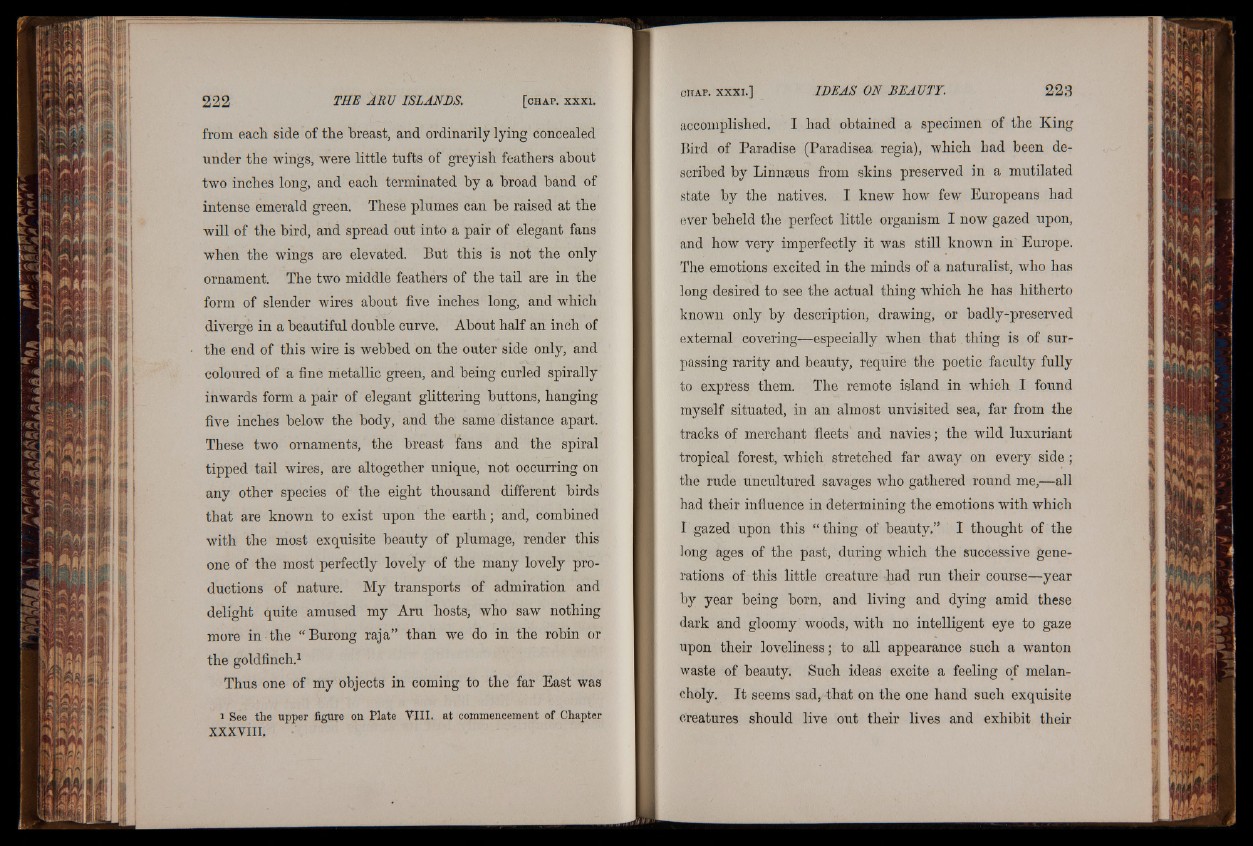
from each side of the breast, and ordinarily lying concealed
under the wings, were little tufts of greyish feathers about
two inches long, and each terminated by a broad band of
intense emerald green. These plumes can be raised at the
will of the bird, and spread out into a pair of elegant fans
when the wings are elevated. But this is not the only
ornament. The two middle feathers of the tail are in the
form of slender wires about five inches long, and which
diverge in a beautiful double curve. About half an inch of
the end of this wire is webbed on the outer side only, and
coloured of a fine metallic green, and being curled spirally
inwards form a pair of elegant glittering buttons, hanging
five inches below the body, and the same distance apart.
These two ornaments, the breast fans and the spiral
tipped tail wires, are altogether unique, not occurring on
any other species of the eight thousand different birds
that are known to exist upon the earth; and, combined
with the most exquisite beauty of plumage, render this
one of the most perfectly lovely of the many lovely productions
of nature. My transports of admiration and
delight quite amused my Aru hosts, who saw nothing
more in the “ Burong raja” than we do in the robin or
the goldfinch.1
Thus one of my objects in coming to the far East was
i See the upper figure on Hate VIII. at commencement of Chapter
XXXVIII.
accomplished. I had obtained a specimen of the King
Bird of Paradise (Paradisea regia), which had been described
by Linnaeus from skins preserved in a mutilated
state by the natives. I knew how few Europeans had
ever beheld the perfect little organism I now gazed upon,
and how very imperfectly it was still known in Europe.
The emotions excited in the minds of a naturalist, who has
long desired to see the actual thing which he has hitherto
known only by description, drawing, or badly-preserved
external covering—especially when that thing is of surpassing
rarity and beauty, require the poetic faculty fully
to express them. The remote island in which I found
myself situated, in an almost unvisited sea, far from the
tracks of merchant fleets and navies; the wild luxuriant
tropical forest, which stretched far away on every side;
the rude uncultured savages who gathered round me,—all
had their influence in determining the emotions with which
I gazed upon this “ thing of beauty.” I thought of the
long ages of the past, during which the successive generations
of this little creature had run their course—year
by year being born, and living and dying amid these
dark and gloomy woods, with no intelligent eye to gaze
upon their loveliness; to all appearance such a wanton
waste of beauty. Such ideas excite a feeling of melancholy.
It seems sad,-that on the one hand such exquisite
creatures should live out their lives and exhibit their